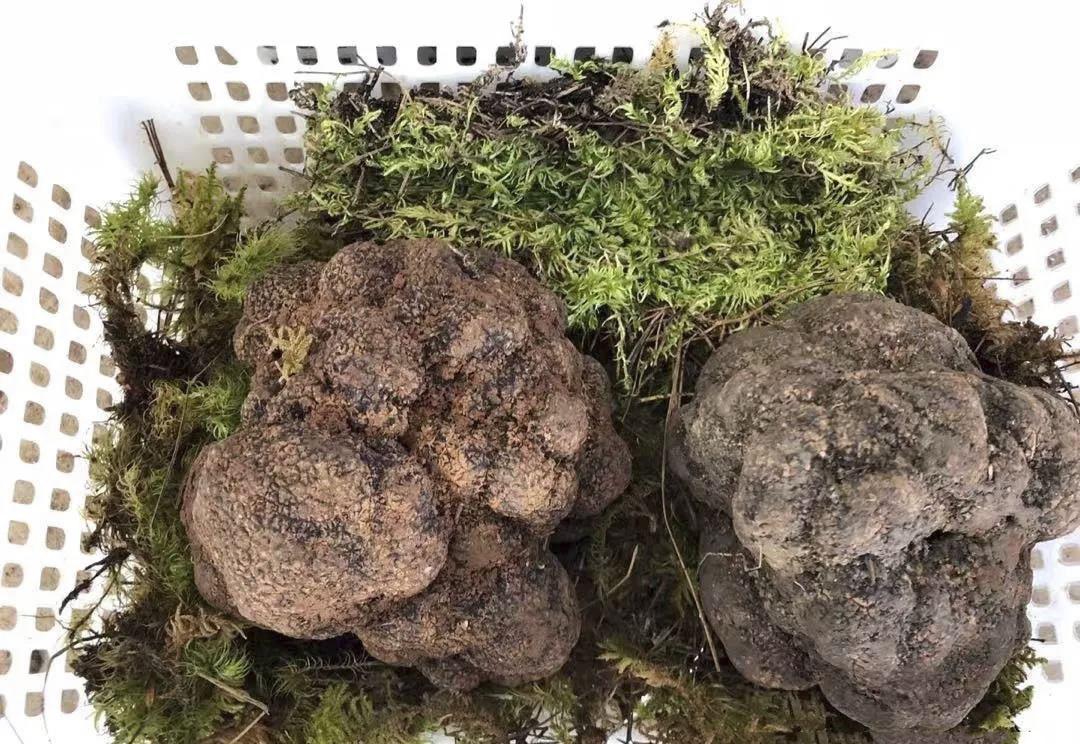Black truffle, also known as truffles, is a wild edible fungus that grows underground and has a rugged appearance. As far as is known, it is mainly distributed in a few areas of the Alps and the Himalayas, as well as the Panxi region around Yanbian County in Panzhihua City, Sichuan Province, accounting for 60% of China's total black truffle production.
Black truffles generally like alkaline limestone soil, the soil is rough and easy to drain and breathable, it needs rain during the summer growth period, it needs a little water but not too much, it is also afraid of large and long rain in the spring; Because truffles cannot photosynthesize on their own to make carbohydrates for growth, they must live with the roots of oak trees, and use the roots of oak trees to absorb nutrients, so the growth range of truffles is generally among the trees where trees gather.

The growth cycle of black truffles is only 1 year, so the size and age of black truffles have no relationship at all. The annual black truffle harvesting season is about the end of March, when the overripe black truffles decay and disintegrate, releasing spores that begin to sprout and grow into mycelium, and after touching the roots that resemble tree whiskers, they form a symbiotic relationship. By about May, the hyphae become enlarged for sexual reproduction and grow into truffles. The newly formed truffles grow slowly and only begin to grow rapidly during the rainy season in August. When the cold wind blows, the truffle stops growing and begins to mature and turn black, releasing a unique fragrance. The maturation period lasts until March of the following year. And the most delicious season is undoubtedly January of the following year, which is the best time to eat black truffles.
Truffles are very picky about the growing environment, as long as the sunlight, moisture or the pH of the soil change slightly, they cannot grow, and are the only delicacies in the world that cannot be grown in a neat and orderly manner. Truffles will grow under one tree, but another tree that looks exactly the same next to it can't, and people still don't know why.
Unlike general fungi such as mushrooms, truffle spores are transmitted not by the wind, but by animals that nibble on truffles. Truffles grow mainly under pine, oak, hazelnut, beech and orange trees, because truffles cannot photosynthesize, cannot survive independently, and must obtain nutrients by means of symbiotic relationships with certain roots.
France is rich in black truffles, so the French have a deep black truffle complex. Every year during the black truffle season, high-end French restaurants are definitely criticized for not having black truffle dishes. The 19th century was the height of black truffles, when at least one dish of black truffle was served at all formal banquets. At that time, Perigord in southwestern France was its main production area, so Perigord black truffle became synonymous with black truffle. However, due to changes in the environment, the production of black truffles immediately decreased rapidly, leaving only 30,000 kilograms after World War II, and at the lowest, the country produced less than 20,000 kilograms.
Provence is the world's most important producer of black truffles, accounting for 80% of France's production. The main production centers are concentrated in Tricastin in the north, which produces tens of thousands of kilograms per year. Every winter Saturday morning, the village of Richerenche, which has almost only one road, becomes the largest black truffle market in France. It is said that this market is full of eerie atmosphere, people on the street mysteriously turn their heads and ears, see goods, bargaining, trading are all carried out in covert, here is no truffle stalls can be seen. Truffles, the real protagonists, rarely show up, and it's hard to believe that 1/3 of all Of France's truffles are sold from this market.
For the past two thousand years, black truffles have only been found in the world in the southern Part of the European Alps, which is the main reason why Chinese are unfamiliar with black truffles. At the end of the 20th century, Chinese scientists discovered the distribution of black truffles in the southeastern region of the Himalayas, and the news caused a sensation around the world. Since then, black truffles from China have been exported in its entirety. The folk application research of black truffle production areas shows that in fact, in the southwest of China, Tibetans, Yi and other ethnic minority areas, black truffles that have been called "no mother fruit" for hundreds of years have long been used by local mountain people to enhance physical strength, improve sexual ability, regulate women's menstrual blood, etc., and are said to have excellent efficacy.